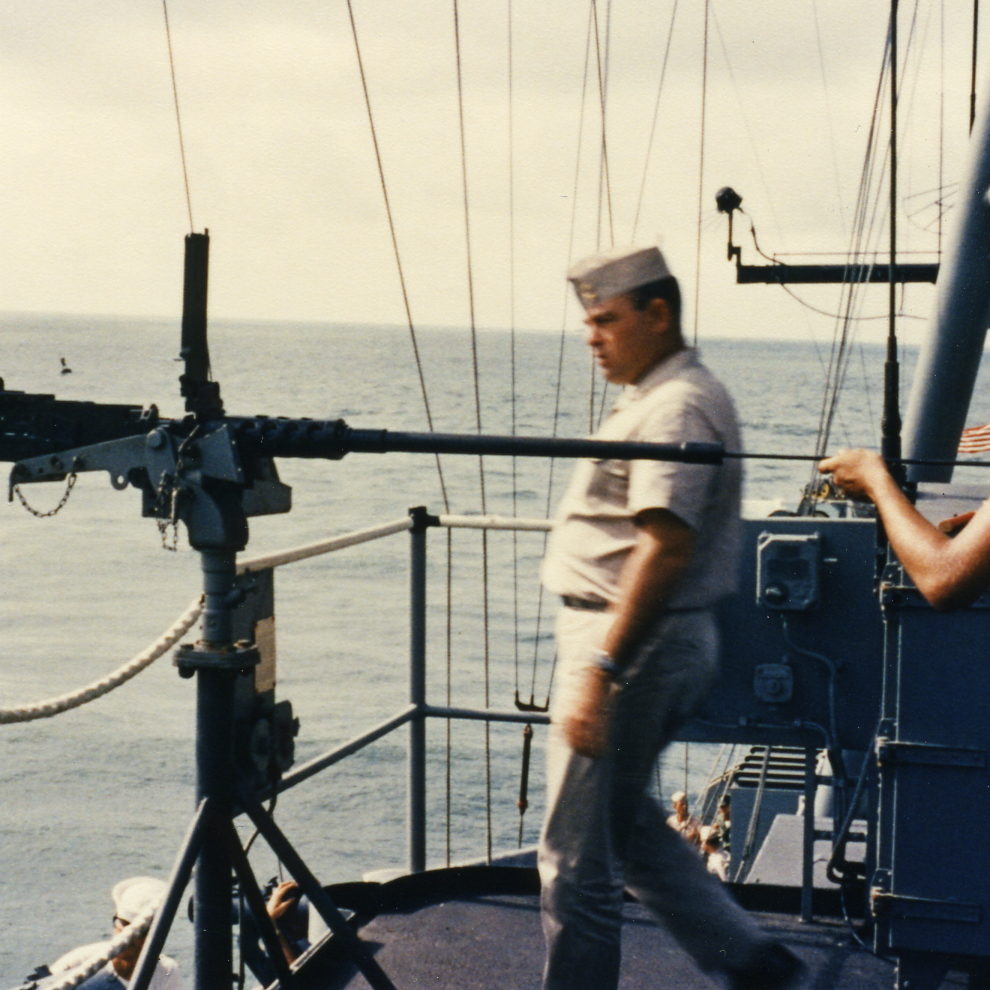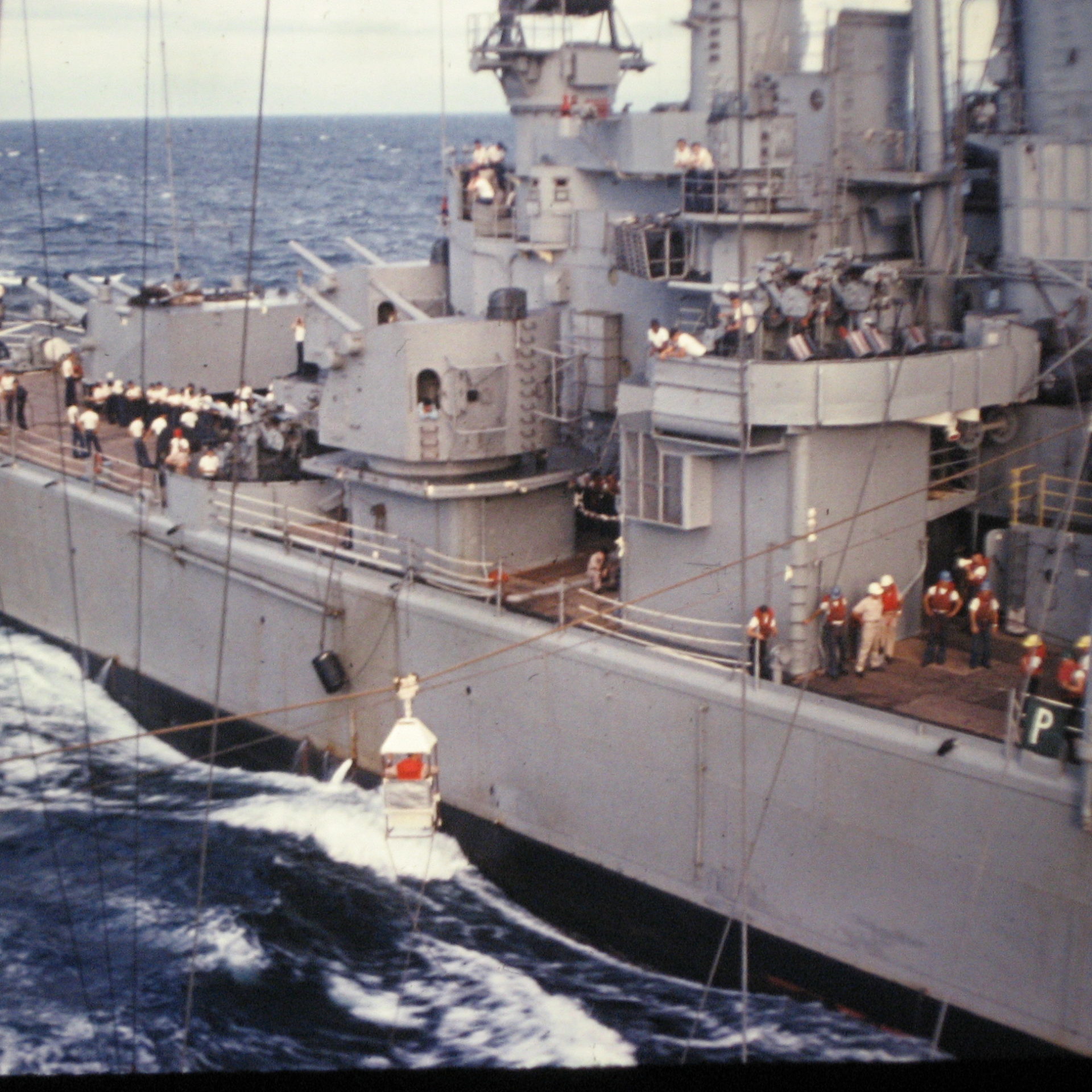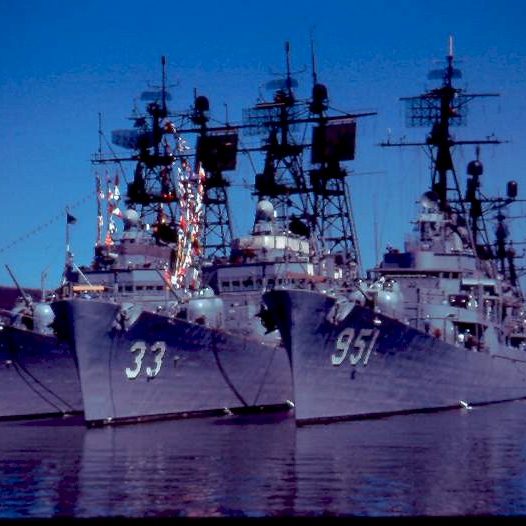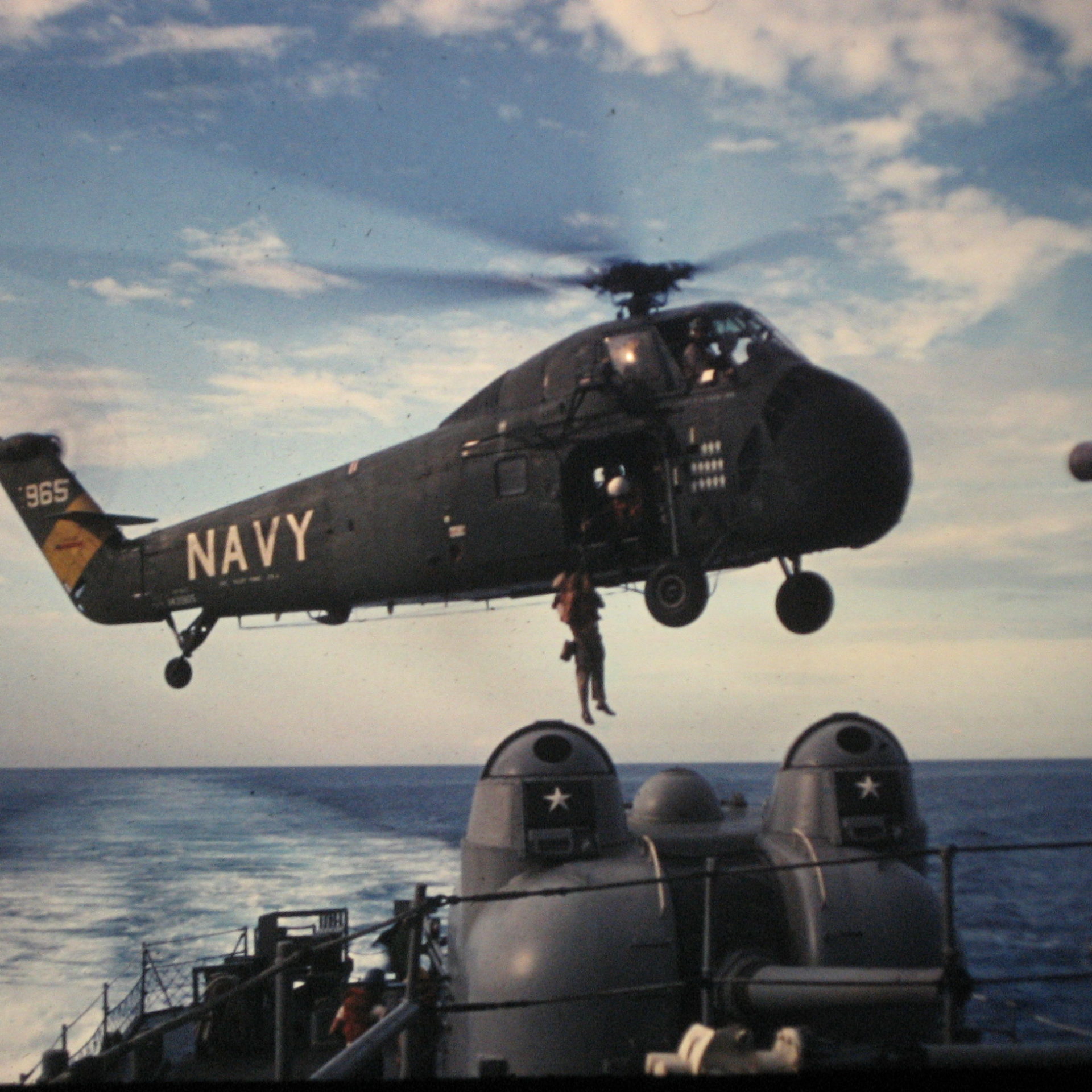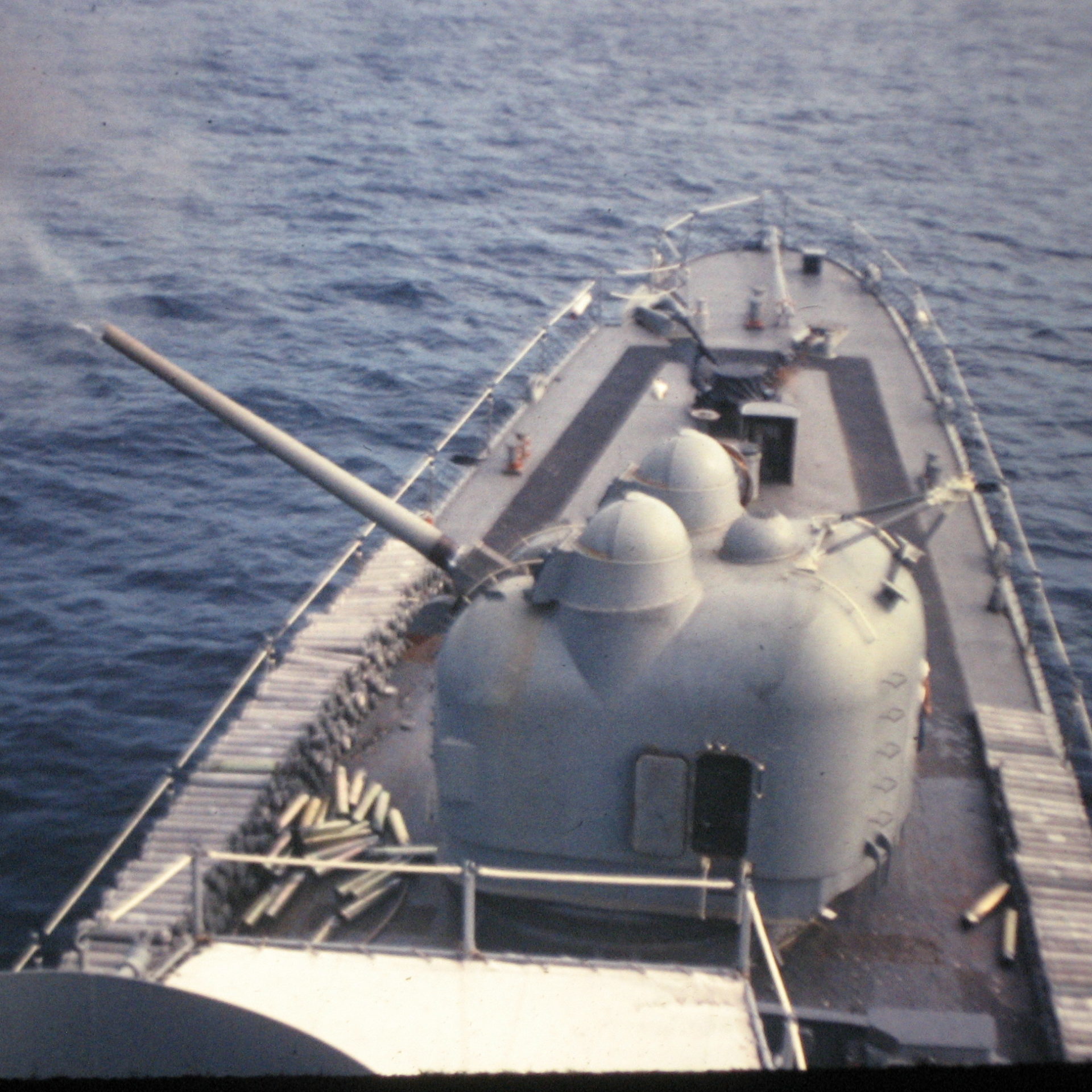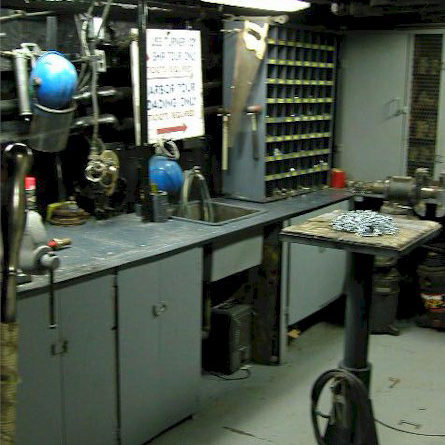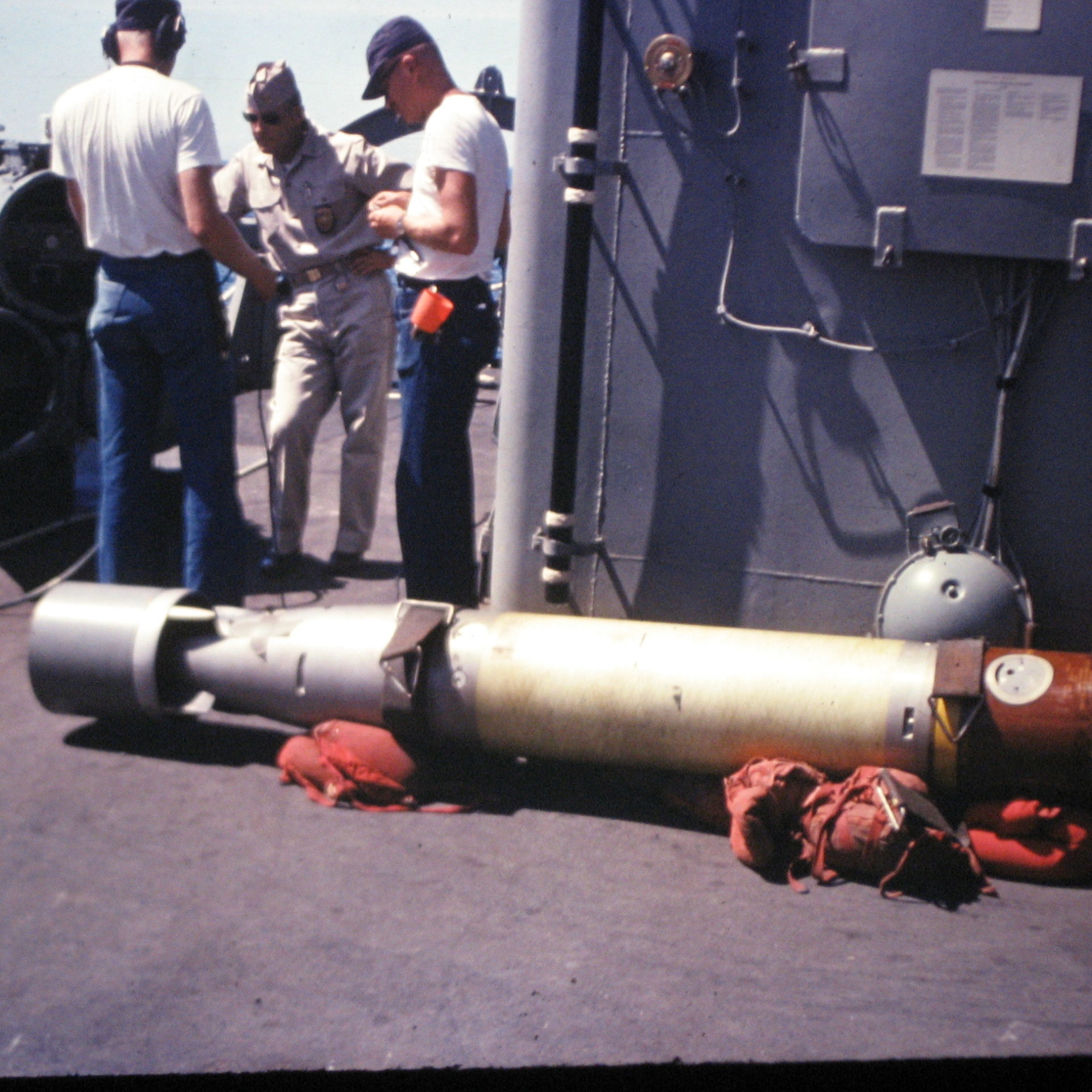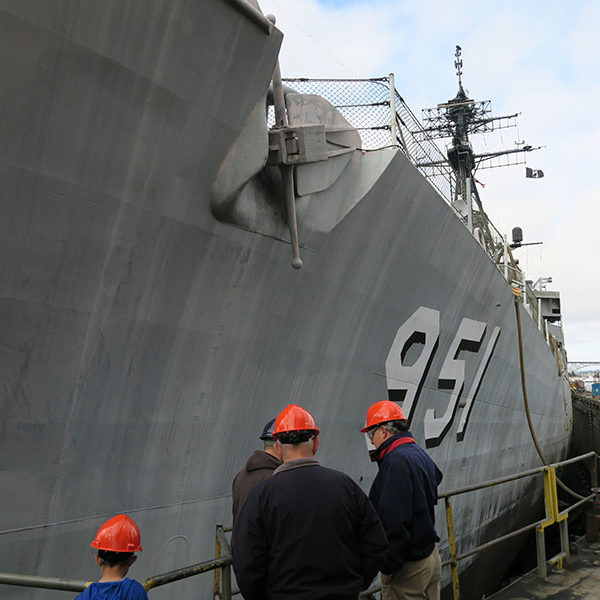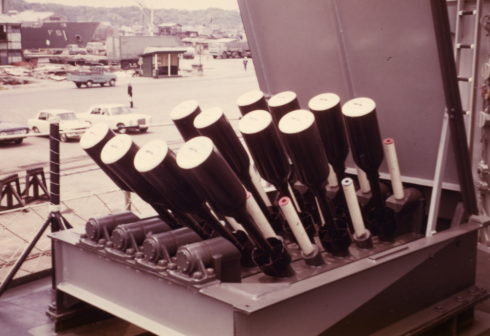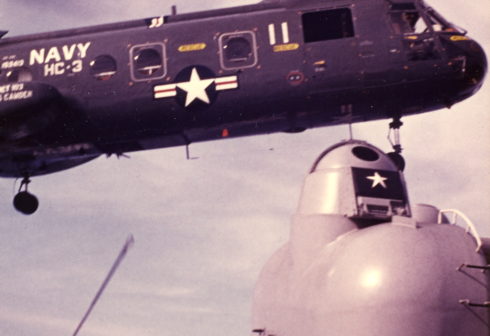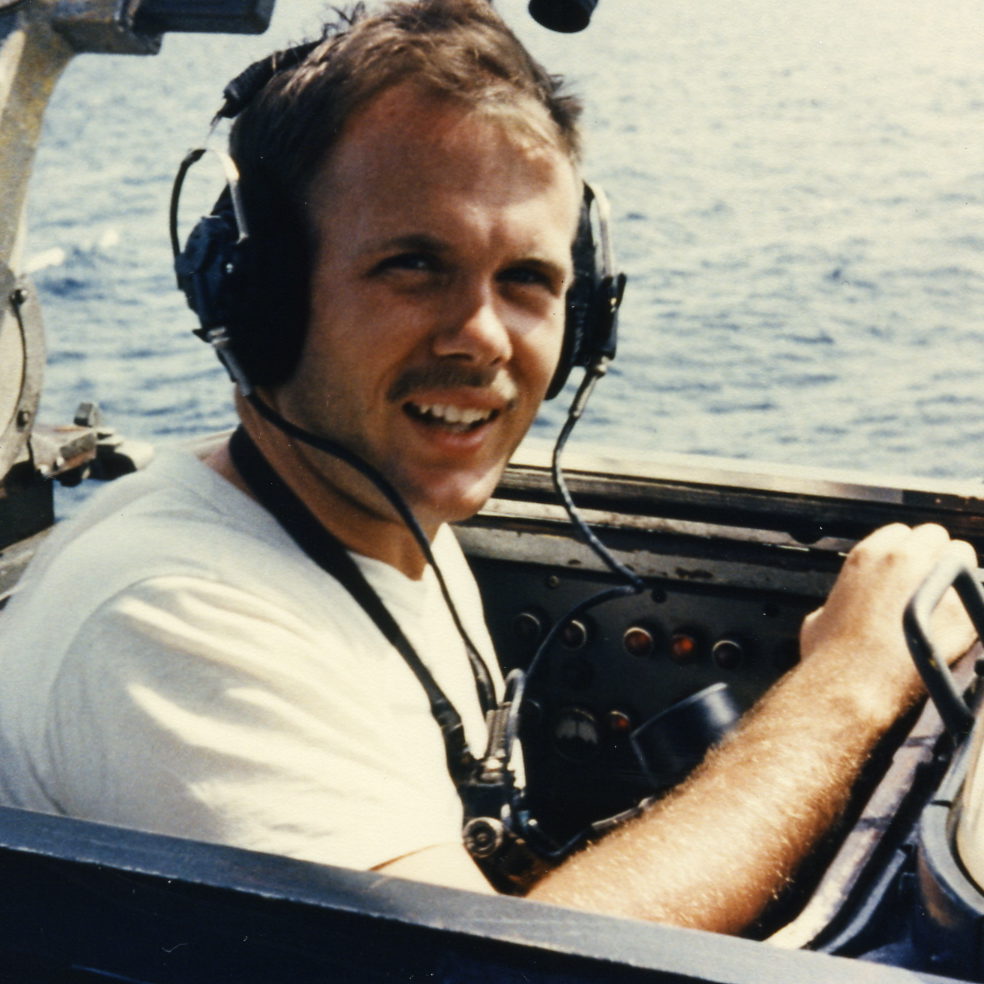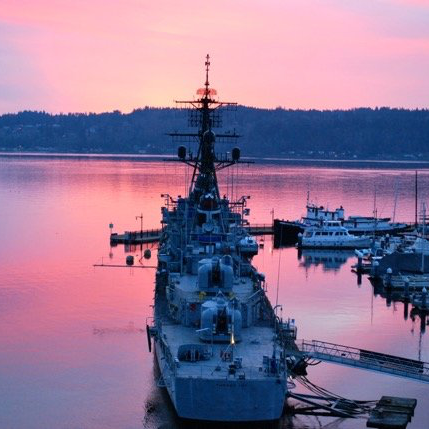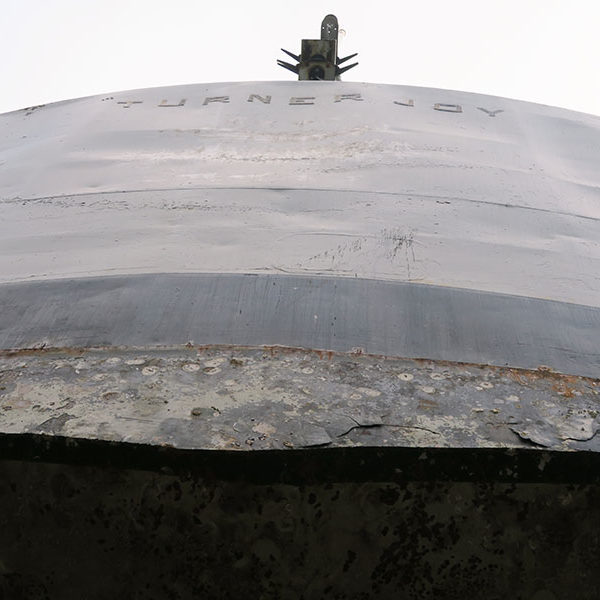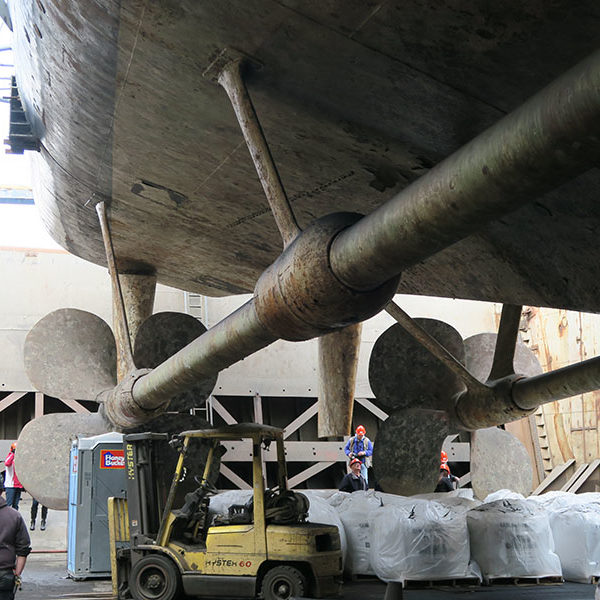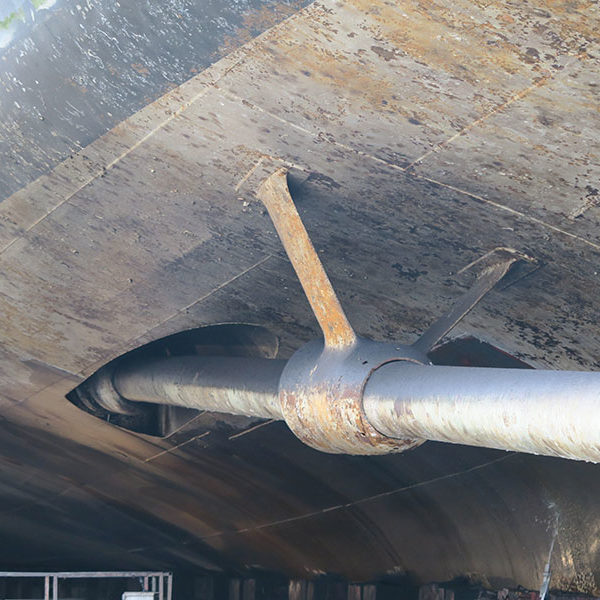On 26 January 1971, she stood out of Long Beach on her way to rejoin the 7th Fleet. She entered Subic Bay on 16 February and went into drydock for several days while both her propellers were replaced. On 5 March, she exited Subic Bay for a tour of naval gunfire support duty along the Vietnamese coast. That assignment, carried out along the I Corps zone coastline near Danang, ended on 2 April, and she headed for “Yankee Station” and two weeks of plane guard duty with the TF 77 aircraft carriers. Following a five-day port call at Subic Bay, Turner Joy took up position at “Yankee Station” again on 27 April, this time as escort for the PIRAZ (positive identification and radar advisory zone) ship. She performed that duty until 30 April, then, after three days evading a typhoon, she moved in close to the I Corps shoreline to resume gunfire support duties. On 14 May, the destroyer shaped a course for Subic Bay. Following a five-day gunfire exercise at the Tabones range, she departed the Philippines to make liberty visits to Bangkok, Thailand, and Hong Kong. In late June, she did another tour of duty on PIRAZ station and provided plane guard services to Kitty Hawk (CVA-63). A brief liberty call at Subic Bay followed, and then, on 30 June, she embarked upon a voyage to Australia and New Zealand. During July, she made visits to the Australian towns of Brisbane and Sydney as well as the New Zealand port, Auckland. On the 26th, Turner Joy got underway for home. She arrived back in Long Beach on 10 August and conducted normal post-deployment evolutions through the remainder of 1971.
In February 1972, the destroyer began an extensive overhaul. Over the ensuing six months, she received entirely new 5-inch 54-caliber gun mounts, and her propulsion plant underwent conversion to enable it to burn Navy distillate fuel. Extensive other modifications, installations, and renovations also took place between February and August. From August to December, she busied herself with various trials and tests at sea, conducted refresher training, and prepared for her next assignment to the Far East.
Her voyage west began on 6 December and ended with her arrival at Subic Bay on the 29th. Two days later, she put to sea for her first tour on the gunline. It also proved to be her last. She delivered gunfire support intermittently for 28 days. Then, on 28 January 1973, American participation in the Vietnam conflict ended with a negotiated ceasefire. For the remainder of that deployment, Turner Joy participated in a variety of operation, including Operation “Endsweep,” the removal of American mines from the waters around Haiphong harbor, as well as antisubmarine warfare exercises and carrier operations in the South China Sea. She punctuated those assignments with port visits to Subic Bay, Hong Kong, Kaohsiung, Taiwan, and Sasebo, Japan. On 13 June she headed home via Yokosuka and arrived in Long Beach on the 22nd. She spent the period from then until mid-October engaged in upkeep and a restricted availability.
On 17 October, she departed Long Beach and set course for her new home port, San Diego. Upon arrival there she began normal operations, engineering and gunnery exercises at sea, alternated with upkeep in port. That routine continued until April 1974, at which time she began preparations for her first peacetime deployment to the Western Pacific in a decade.
She stood out of San Diego on 6 May, reached Pearl Harbor on the 12th, and completed a brief assignment with Ranger (CVA-61) in the Hawaiian operating area on the 24th. On that day, she departed Oahu and continued her voyage west. Turner Joy arrived in Subic Bay on 4 June and, for the next two months, conducted local operations in company with Ranger. On 1 August, the destroyer departed the Philippines for a goodwill visit to Surabaja, Java and a liberty call at Hong Hong. She returned to the Philippines on 31 August and conducted local operations out of Subic Bay for two months before heading homeward on 3 October. The warship arrived in San Diego on 22 October and, after a month of post-deployment leave and upkeep, began a normal schedule of operations in the Southern California operating area.
Turner Joy ended 1974 and began 1975 engaged in a rather extensive availability which was completed in mid-April. At the conclusion of that repair period, she resumed operations along the coast of Southern California. Refresher training, FleetEx 2-75, and a midshipman training cruise occupied her from April through August.
On 2 September, she departed San Diego for the 11th deployment of her career to the Western Pacific. However, after a two-week stop at Subic Bay, her Western Pacific assignment was transformed into a tour of duty in the Indian Ocean. On 13 October, she departed Subic Bay in company with Midway (CV-41), Fanning (DE-1076), and Sacramento (AOE-1) bound ultimately for Bandar Abbas, Iran. Along the way, she visited Singapore and Sri Lanka and participated in exercises with the Singapore Navy. The destroyer arrived in Bandar Abbas on 13 November whence she and her sailing companions participated in the CENTO exercise, “Midlink.” During that operation, she joined units of the British, Iranian, and Pakistani navies in practicing a broad spectrum of naval tactics—ASW, AAW, surface engagements, gunnery drills, and missile shoots “Midlink” ended on 25 November, and Turner Joy briefly stopped again at Bandar Abbas before heading for the Philippines on the 29th. She arrived back in Subic Bay on 12 December and remained there until 9 January 1976. Routine operations in the Philippines, exercises in the South China Sea and the Sea of Japan, as well as visits to ports in Taiwan and Japan, characterized the remainder of that deployment. On 17 March, she stood out of Yokosuka to return to the United States. After stops at Midway and Pearl Harbor, she reentered San Diego harbor on 4 April.
Following post-deployment standdown, the destroyer reverted once more to training operations out of San Diego. As a result of long years of service in Vietnam and two delays in a scheduled overhaul, however, Turner Joy was unable to successfully complete her Operational Propulsion Plant Examination. This deficiency made it necessary for the ship to spend the remainder of 1976 in port correcting propulsion deficiencies. The year 1977 was spent largely in port due to recurring material problems. In September, however, Turner Joy was underway briefly for local operations. Pre-overhaul standdown began in mid-October; and, on 7 November, the ship was towed to the Long Beach Naval Shipyard for a regular overhaul designed to completely renovate her entire engineering plant. The entire year of 1978 was spent in overhaul.
After an extended period in dry-dock at Long Beach, Ca. the ship went to San Diego mid-1979 for crewing to test the work done. After Engineering Quals were passed the ship was provisioned for a Westpac/South Pac goodwill cruise. The tour consists of going to Hawaii for more Quals in all departments. Then on to the Philippines for repairs on needed items. After 2 weeks there it went on to Hong Kong, Singapore, Australia, and New Zealand. During this time the ship did sea trials with the Navy’s of Australia and New Zealand. Upon departing the ship stopped at the American Samoa Island of Pago Pago on the way back to Hawaii before returning to the USA. The ship arrived in San Diego, Ca. in November 1980.
In 1982, as the new Spruance-class destroyers joined the fleet, the Navy announced the retirement of Turner Joy and her sister ships saying, “…the cost of modernizing them is far greater than the benefits that could be derived from continued service.” The Bremerton Historic Ships Association obtained Turner Joy from the inactive fleet and after refurbishing her and constructing appropriate access to the ship, opened her to the public in 1992.
The USS Turner Joy received nine battle stars for her Vietnam service.
Recovery: 1978 – 1982. By 1978, USS Turner Joy was completing a major overhaul at the Long Beach Naval Shipyard where the ship was given a new life. The crew rallied behind its leadership and successfully passed the CINPACFLT Propulsion Examining Board’s Light-Off Examination to begin the process of returning to full operational capability as it returned to its homeport in San Diego. That was realized in 1979 with the ship’s successful passing of two critical Pacific Fleet inspections: the Operational Propulsion Plant Examination in which USS Turner Joy once again demonstrated full power steaming capabilities; and the Underway Material Inspection by the Board of Inspection and Survey that found the ship fit for further service. In the workup to deployment, the ship successfully fired its three 5” guns simultaneously, was evaluated fully combat ready for deployment, and achieved the Battle Efficiency (Battle “E”) award for best ship in its destroyer squadron. It was also the oldest. In 1980, USS Turner Joy departed San Diego for the western Pacific with not one piece of major equipment out of commission. Over the next six months, the ship remained under the operational control of Commander US Seventh Fleet performing numerous underway duties including providing services to a US nuclear-powered submarine in Hong Kong harbor while the sub’s crew enjoyed liberty ashore. After a very successful deployment, Turner Joy returned to San Diego and remained an operational asset for Commander US Third Fleet until 1982.
